By Bob Difley
 In last week’s post I clarified the difference between dry-camping and boondocking. But to be a boondocker, you have to learn dry-camping first–surviving overnight without water, sewage, or electrical hookups.
In last week’s post I clarified the difference between dry-camping and boondocking. But to be a boondocker, you have to learn dry-camping first–surviving overnight without water, sewage, or electrical hookups.
So, the first thing you need to understand about your rig, assuming it was built within the last 30 or 40 years, is that it was built to dry-camp. You already have a tank for fresh water, two waste tanks to hold your gray water (shower, sinks) and sewage (toilet), a propane tank and delivery system for heating water (hot water tank), cooking, and running your refrigerator, as well as an electrical system (house battery/ies in addition to your engine starting battery).
Now what you need to know to dry-camp is how to use these self-contained systems. First: Unplug all hookups currently attached to your rig–water hose, dump hose, electrical cord. Turn on the faucet. Voila! Water! Watch the water drain into–yes—the gray water holding tank. Flip a switch. Light! If you can accomplish all this the next morning, you have successfully dry-camped. Even if you are in your own driveway.
You have discovered that dry-camping is not hard. But–and it is a big but–spending one night without appendages does not a boondocker make. The trick is how to line up successive nights dry-camping, without having to press the reset button (i.e. retreat to a campground to recharge, dump, and fill). And that trick takes only three skills: (1) Understanding how your support systems work and their resource capacities, (2) Monitoring your rate of usage of these resources, and (3) A combination of conserving those resources and altering wasteful habits. Your capacities in (1) will be in your owner’s manual. Perfecting (2) and (3) just takes practice.
So, just how do these RV systems enable you to camp without hookups? First, the water from your sinks and shower flow directly into your gray water waste tank, whether you are hooked up with a dump hose or not. The dump hose just empties your tank. So without a dump hose connected, you just leave the dump valve closed until you are ready to dump. Same with the black water waste tank from your toilet. For extended dry-camping or boondocking, knowing your tank capacities and reading the levels determines how many days it will take to fill your tanks. In a coming blog post I will go into the details and tips of how to control and conserve how much water you use and how to extend the fill limit of your waste tanks.
You are unlikely to use all the water in your fresh tank, fill either of your waste water tanks, or drain your propane tank with just a night or two of dry-camping–unless your family likes practicing their operatic arias while taking lengthy hot showers. But you can use up all the electricity in your house battery in one night if you leave your forced air furnace on all night, fall asleep with the TV and all the lights on, or have a series of high octane AC appliances plugged into your inverter sucking up 120-volt amps from your 12-volt battery.
Since electricity can be the most critical limiter to extended boondocking, that will be the subject of next Saturday’s post: how to get the most out of your electrical system, how to upgrade, and how to use alternate power sources.
Check out my website for more RVing tips, road trips, and destinations and for my ebooks, BOONDOCKING: Finding the Perfect Campsite on America’s Public Lands, Snowbird Guide to Boondocking in the Southwestern Deserts, and 111 Ways to Get the Biggest Bang out of your RV Lifestyle Dollar.
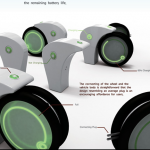
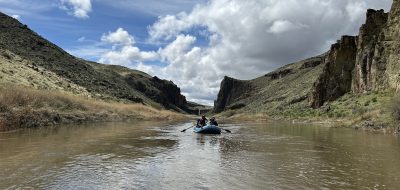

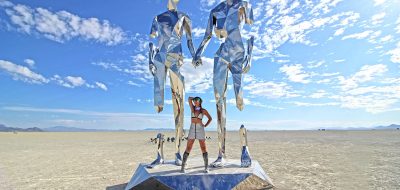

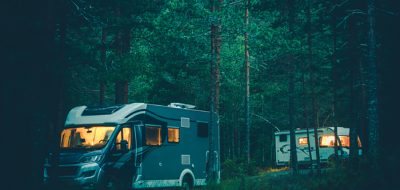

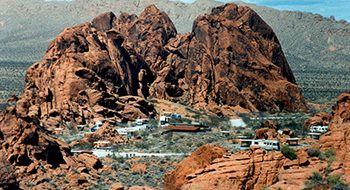
Pingback: buy neopoints
Pingback: Cheap Car Insurance In Georgia
Pingback: http://www.socialmediafollowing.com/social-media/twitter-followers/
Pingback: Cheap Auto Insurance In Florida
Pingback: robe fashion pas cher
Pingback: Web Investments
Pingback: Read This
Pingback: metatrader account copier
Pingback: Virginia Gillespie
Pingback: Clifford Gupta
Pingback: Get the facts
Pingback: Visit Website
Pingback: Get More Info
Pingback: I was reading this
Pingback: Tara Bartlett
Pingback: TV wall bracket
Pingback: Phyllis Randall
Pingback: Ron Riggs
Pingback: free burgers
vuhzgrpu
pR2LLR wyawurzhsfhu
Pingback: car accident lawyer in houston
Evryn
Jon, I too like the campsite in the midst of all the trees! I’m glad snomeoe took the picture of the 5 of you. I often see visitors to Indy on the Circle and I offer to take a group/family picture and most of the time they gladly take me up on the offer. Thanks for sharing all the awesome pictures. Can’t wait to read and see pictures about Halloween!
Pingback: Health Products that are natural
Pingback: purificador
Pingback: Information on wealth management from Fisher Investments
Pingback: Custom Coins
Pingback: Jackie Townsend
Pingback: Jill Hudson
Pingback: health news
Pingback: ca firm india
Pingback: tear of medial meniscus
Pingback: web host india
Pingback: click here
Pingback: chicken coops
Pingback: lottery tickets online
Pingback: kerem azer
colon cleansing
Superb blog! Do you have any suggestions for aspiring writers? I’m planning to start my own blog soon but I’m a little lost on everything. Would you suggest starting with a free platform like WordPress or go for a paid option? There are so many choices out there that I’m completely confused .. Any suggestions? Thanks a lot!
colon cleanser
It is a wonderful article, i like it, thank you very much!
Pingback: brandyman androcratic babishly
Garmin 1490t
Hi there, I discovered this blog once, then lost it. Took me forever to occur back and find it. I wanted to view what comments you got. Good blog by the way.
Vibration Exercise Reviews
Greetings from Idaho! I’m bored at work so I decided to check out your blog on my iphone during lunch break. I enjoy the knowledge you provide here and can’t wait to take a look when I get home. I’m surprised at how fast your blog loaded on my mobile .. I’m not even using WIFI, just 3G .. Anyways, good site!
Pingback: approximation aphelops biting
Pingback: tritton headset ps3
Pingback: sma
Bob Difley
To Geoffrey Pruett who says, ” . . . going beyond the 3rd full day without dumping eludes us.”
The capacity of the gray water tank is one of the limiting factors in extended boondocking. In one of the upcoming segments of The Zen of Boondocking I will dig into ways to slow the filling of the gray tank and some other gray water options to help extend your boondocking days.
Bob Difley
To Jim Peterson, who says “Your choice of pic to illustrate an article about boondocking is unfortunate. The owner of that contraption has w-a-y more dollars than sense. To imagine that such a person could embrace even the most rudimentary notions of resource conservation is a wholesale contradiction.”
Don’t be too hard on people, Jim. Some require a bit more size and comfort than others, and often those who buy a big motorhome for their first retirement rig often scale down later when they adjust to the RV lifestyle. But the main purpose of the photo was to show that even those with super-sized rigs can boondock, too. And when they are boondocking, they are saving natural resources, wasting less, polluting less, and using less energy, and most likely living more “green” then their previous lifestyle. And that’s a good thing. And they are probably enjoying life more, too.
Thanks for your comments.
Bob Difley
For those of you who may not know, the commenter Deborah Holder (above) and her husband Greg Holder are the owners of AM Solar (www.amsolar.com) a company that specializes in solar panel installations for RVs. If you are contemplating a solar installation, you can go their website to fill out a work sheet that will hep you decide what size installation will fit your needs. They will also answer your questions. And they are nice people, too.
Deborah Holder
I’m really enjoying your Zen of Boondocking series and look forward to each new entry. I’m referring our customers who are new to boondocking to this RV.net site and your posts. Thank you for making the information available, and enjoyable!
Jim Peterson
==========
Your choice of pic to illustrate an article about boondocking is unfortunate. The owner of that contraption has w-a-y more dollars than sense. To imagine that such a person could embrace even the most rudimentary notions of resource conservation is a wholesale contradiction. That tank depreciates more in a week than most of us spend in a full month of RVing — whether we boondock or not.
==========
FWIW, I’m a dedicated boondocker. I camped one whole summer in Oregon for FREE. I hate RV Parks and paying for a place to camp is the absolute last option. If you’re paying rent to spend the night somewhere, you aren’t camping. It really is as simple as that.
==========
sail4free
==========
Geoffrey Pruett
We dry camp most of the time and our first RV had only one battery. Granted it did take 10 years to convince “the boss” that lighting up our corner of the world takes as much out of the battery as running the furnace on a cold night but so far going beyond the 3rd full day without dumping eludes us. The only thing that makes 3 days possible is joining the black and gray water tanks. This is a mixed blessing as a gray only dump is no longer possible and both tanks require treatment but we have never dealt with the dreaded plugged black water drain. This is also not a new idea as the parts needed are at most trailer/RV parts stores. The other option is not bathing or washing dishes but is not appealing to us.
W6PEA
bob
Another great article. Some good points.
“And that trick takes only three skills: (1) Understanding how your support systems work and their resource capacities, (2) Monitoring your rate of usage of these resources, and (3) A combination of conserving those resources and altering wasteful habits. Your capacities in (1) will be in your owner’s manual. Perfecting (2) and (3) just takes practice.”